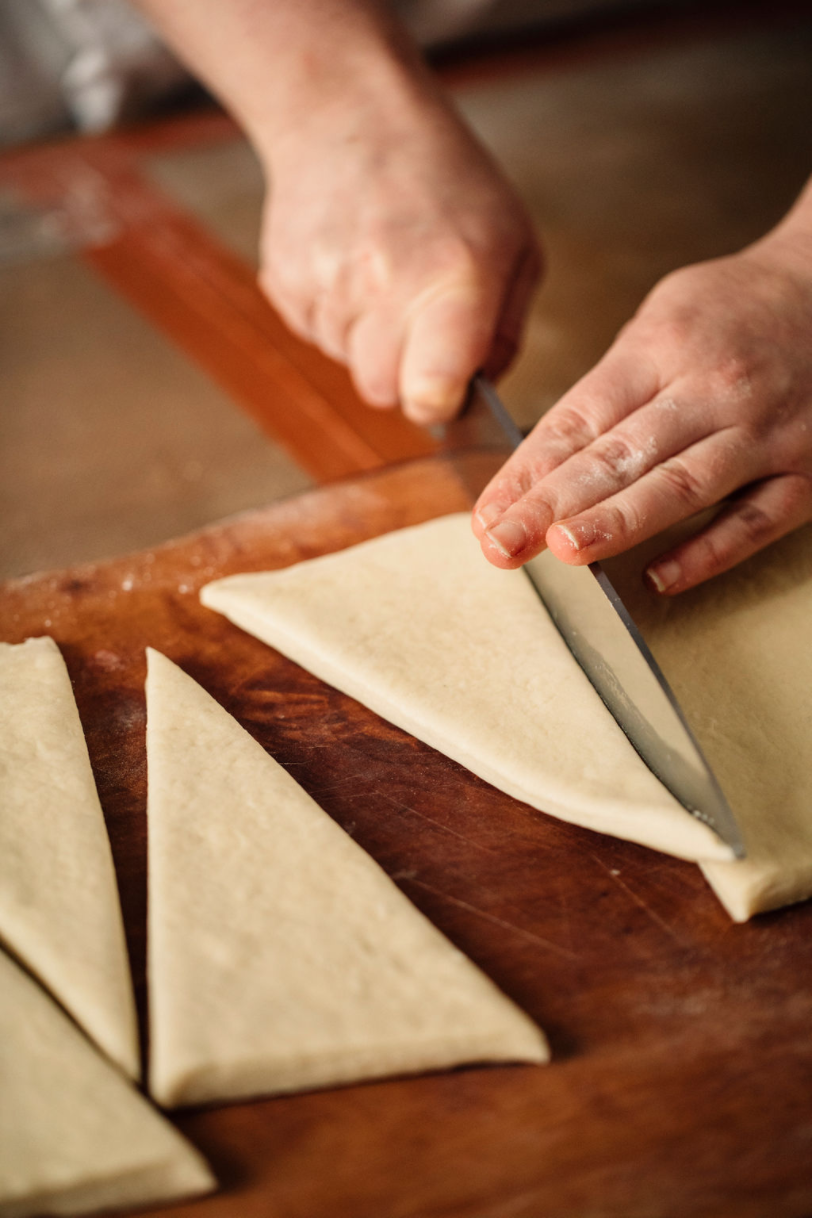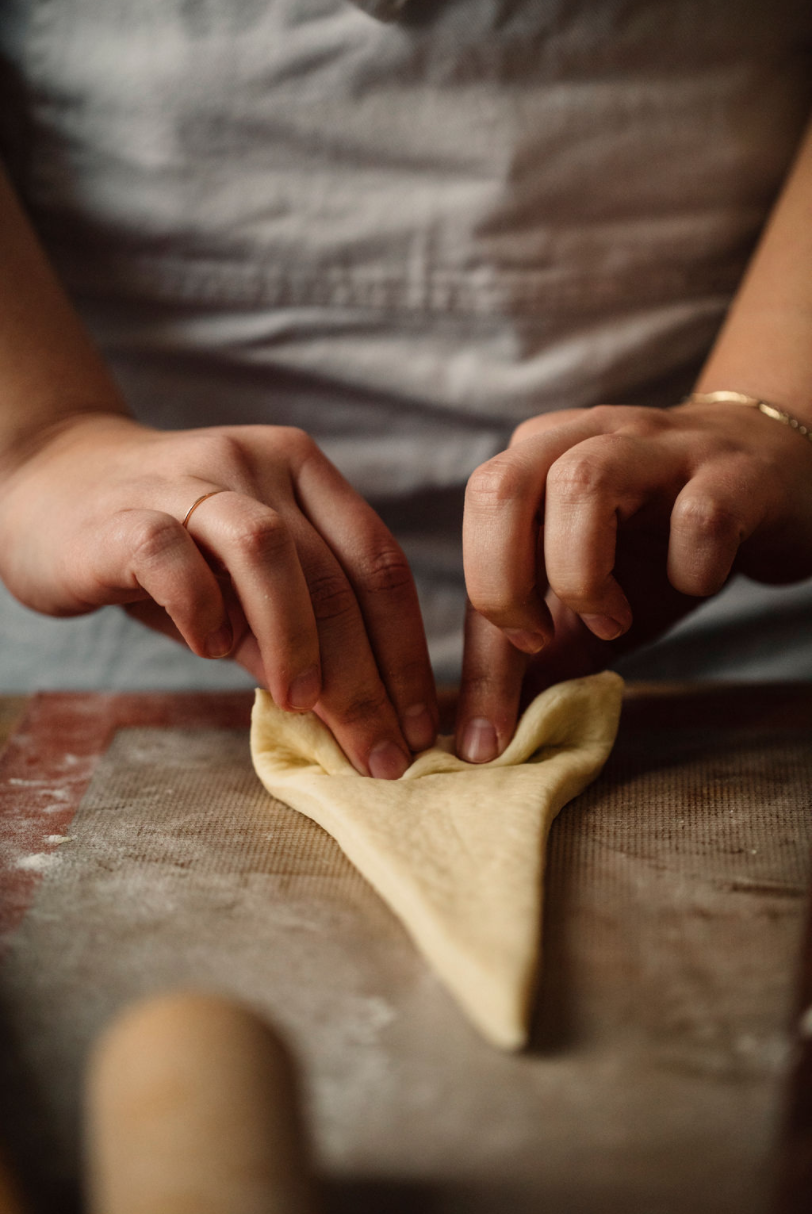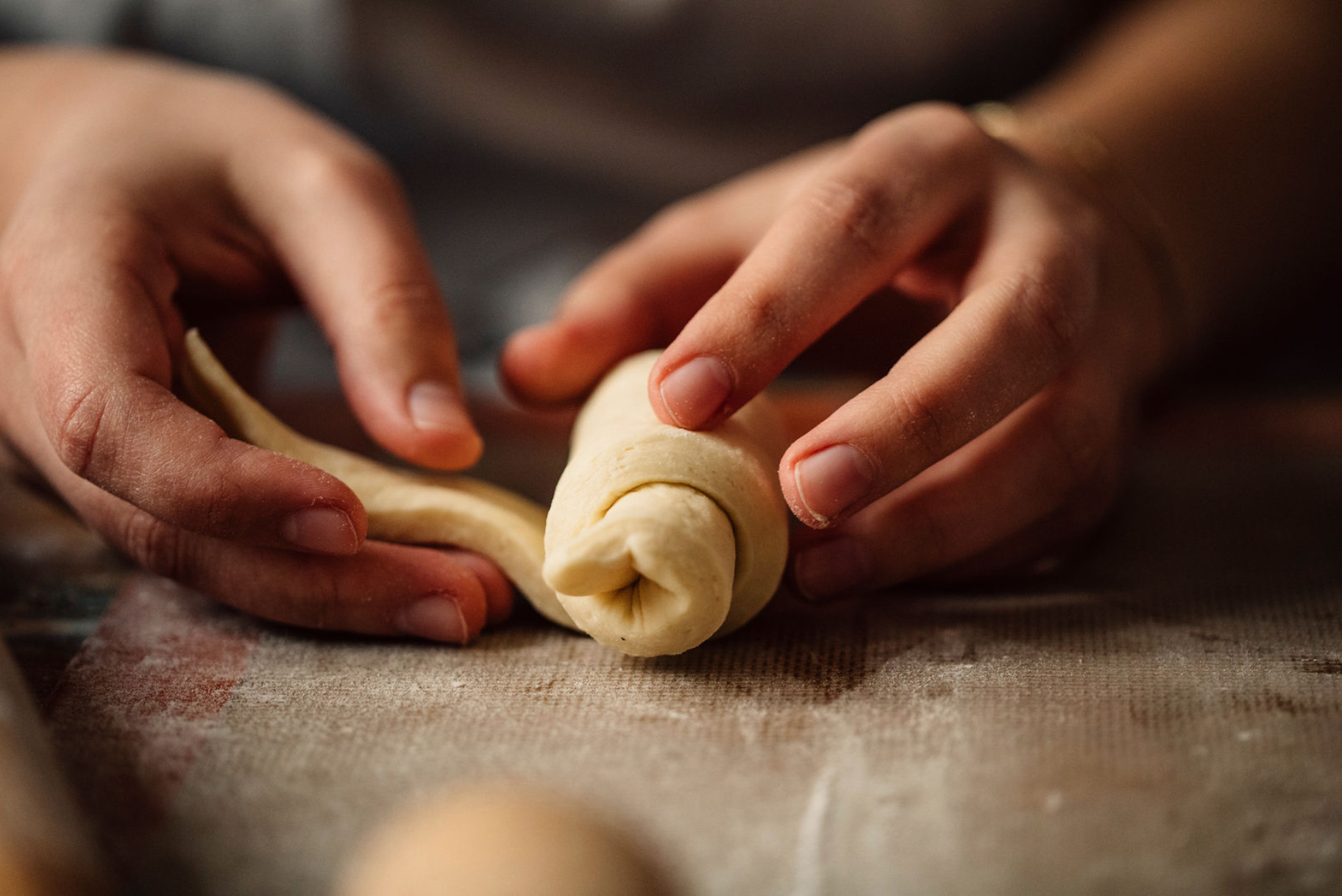Online Croissant workshop with Rachael
Hello Bakeshop Friends! Rachael here. I needed a little cheering up, and I thought you might too. Often, this time of year, I’m in Paris for one of my pastry workshops — and I’ve been wistfully thinking about ways and translate that experience…
So! I’m teaching an online croissant class. It is be comprised of 4 pre-recorded sessions from my home kitchen (i.e. nothing fancy equipment-wise) that will be posted on IGTV and YouTube. The class is FREE to participate, just make sure you have wifi & the ingredients! Click the button below to grab the recipe packet — and read on for a schedule and all the info you need to join me in making some croissants at HOME. #coylescroissantclass
Ingredients You’ll need:
Unbleached All Purpose Flour: 890 grams (6 cups) PLUS extra for working
Granulated Sugar: 65 grams (1/3 cup)
Kosher Salt: 11 grams (1 tablespoon + 1 teaspoon)
Active Dry Yeast: 14 grams (1 tablespoon + 2 teaspoons)
Unsalted Butter: 510 grams butter (1 lb. + ¼ cup) unsalted butter
Whole Milk: 2 cups
Large Eggs: 1-2
Optional, Dark Chocolate: 2 bars for Pain au Chocolat
Kitchen Equipment:
a medium/large kitchen bowl + wooden spoon or other sturdy stirring tool
a stable work surface to roll out dough
a rolling pin
two baking sheets + parchment paper or a silpat + plastic wrap
ruler or yardstick
natural or silicone brush for egg washing croissants for before baking
optional, but very helpful: a kitchen scale + a dry brush for taking off excess flour
Class Schedule:
All class sessions are posted on IGTV (@coylesbakeshop) and YouTube (Coyle’s Bakeshop Channel) — apologies in advance for the awkward vertical format on YouTube!
Session/Day ONE: Mixing Dough!
Session/Day TWO: Lock-In & Three Turns.
Session/Day THREE: Sheet Out & Shaping
Session/Day FOUR: Proofing & Baking
FREQUENTLY ASKED QUESTIONS:
Hello Wonderful Croissant-Makers! Rachael here. Unfortunately, I’m super busy at the Bakeshop, trying to re-open and add hours, so I’m not able to respond to individual questions. But I’ve compiled this FAQ – so hopefully that helps! Happy Baking!
This recipe makes a lot of croissants, can I cut it in half?
Ok, so I know that it makes a lot – however, it’s tricky to get your dough to the required dimensions for turns and cutting out pastries with a smaller piece of dough. The good news is that you can freeze your shaped pastries both before and after baking. And, making croissants is enough work that you may find that you’re glad to have gotten so many pastries for your effort…
Should I use “active dry yeast” or “instant yeast”? What’s the difference?
In the class materials, I inadvertently put down “active dry yeast” in one spot – and “instant yeast” in another – causing some understandable confusion. My preference in this recipe is 14 grams of active dry yeast, however, if you only have instant, feel free to use it, but I would take the quantity down to 10 grams of instant yeast.
In theory, active dry yeast needs to be bloomed in water before using, whereas instant can get mixed straight in with the dry ingredients. In reality, active dry yeast can also absolutely be mixed into the dry ingredients without blooming it, which is exactly what we’re doing here; active dry yeast will just take a little longer to get going, which is ideal for croissants.
What kind of butter should I use?
First, the most important thing is to use unsalted butter. Salted butter isn’t going to have the same flavor and, because the amount of salt isn’t consistent from brand to brand, it’s hard to simply adjust for it in the dough by taking out salt.
As for brand, we use Wuthrich butter at the shop, but Plugra, Cremerie Classique & Kerrygold are all great higher fat (about 83%) butters. Traditional grocery brands will work as well, you just might find that they are a little less flexible as they chill.
What do I do if my dough tears during the lock-in?
Patch it! If any of the flaps tear while you are rolling and stretching, either stick the dough back together, or simply cover the tear with the subsequent flap.
My dough is tearing during the turns. Help!
Don’t worry, this happens all the time. First, dust the exposed butter with a little flour so that you can roll without making a huge mess. Second, if you can fold any tears inside the dough during the turn, super, you’ll never see them again. If there are a LOT of tears and the butter seems very soft, consider pausing mid-turn and refrigerating the dough for 5-10 minutes before proceeding with the turn.
(If the dough seems to be separating or tearing a LOT, it might be an indication that you need a little more water in the détrempe – which will promote a little more gluten development and give you more elasticity.)
What do I do when I get a big bubble during the turns?
The best thing to do is to roll the bubble out through the end. If that doesn’t work, but you still need to break the bubble, that’s ok. Just make sure that you cover the broken piece of dough (if possible) by folding it inside with the turn.
My dough is shrinking.
Most likely, the dough just needs to rest a bit before proceeding with the turn, or the sheet out.
If your corners are relentlessly shrinking in and not holding a 90° shape, it could mean that there are some portions of the dough on the ends have no butter in them (oh no!). Consider trimming up to ½” off the end of the dough and proceeding with your turns.
My butter is cracking.
Again, this happens all the time. Usually it’s an indication that the butter got too cold during the resting time. Either let the dough warm up slightly, or whack the dough with a rolling pin (like we did for the beurrage) to make it flexible again – or both.
What’s the best way to freeze my shaped croissants?
I recommend spaced them out (just enough so that they aren’t touching) on a sheet pan or plate and putting them in the freezer uncovered until they are solid. Then, transfer them to an airtight container or bag.
How long will my croissants last in the freezer?
The quality and texture will start to decline a little bit after about 10 days, so they will be best for the first week and a half or so. But they are still quite good for up to month.
Photography by Charity Burggraaf




